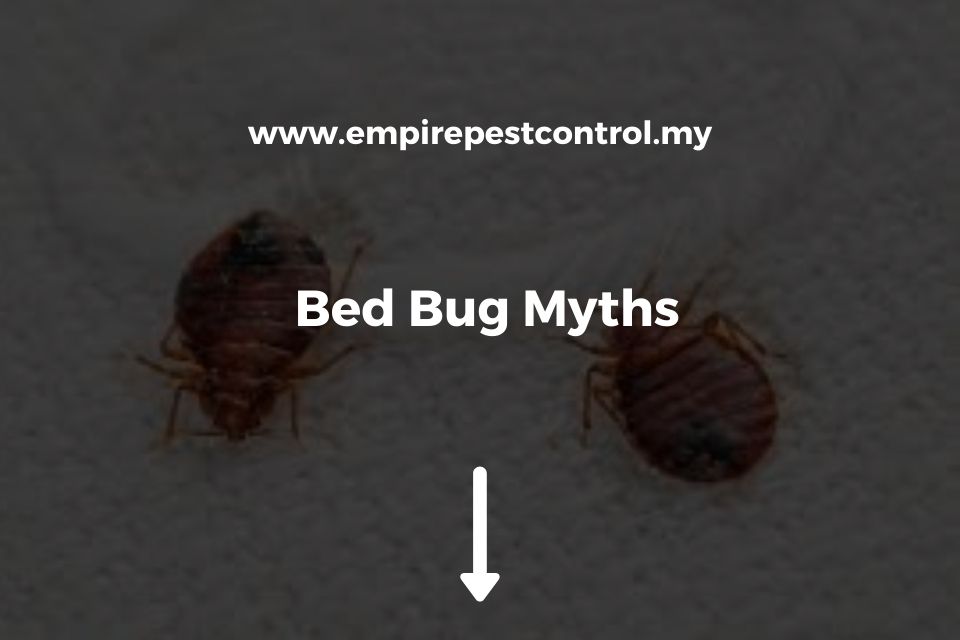Bed bugs frequently infest numerous households and commercial settings.
These little pests can cause big problems if not dealt with a bed bug control in Malaysia!
There are so many misconceptions about bed bugs, which is why it’s important to know the truth.
We’ll bust some of the myths around these sneaky critters in this blog post so you can stay up-to-date on what they’re really all about.
Contents
Bed Bugs Cannot Be Seen
One of the most common myths that surround bed bugs is that they cannot be seen.
The truth is that bed bugs may or not show signs of their presence, depending on how long the bug has been present and whether it has just fed recently, but bed bugs can actually be seen.
Bed bugs are not invisible to the eye and when a little critter appears in front of you, you’re certainly going to see it.
The reason why this type of myth exists is that some bed bugs can be tiny, which makes them difficult to see for certain people.
However, bed bugs are not invisible and they can be seen if there is a little one in front of you or crawling on your skin.
Bed bugs look like small bugs or fleas, and they are often brown.
Since bedbugs feed on human blood, if you see a bug that is biting your skin this could be the insect responsible for making an appearance.
Clean Places Don’t Attract Bed Bugs
Although cleaning your house regularly will stop attracting pests such as rats, roaches, and ants, the case isn’t the same for bed bugs.
As long as humans are present in an area, these tiny critters will always be around.
Bed bugs are attracted to the carbon dioxide we release when breathing and they can also sense our body heat from a distance away, making it easy for them to find us no matter where we might be in their environment – even if we’re not present!
Cleaning won’t be effective in stopping bed bugs because it isn’t the dirt they’re drawn to. However, this doesn’t mean you should stop with your household duties!
The key is avoiding contact with bedding or furniture that has been infested by bed bugs in order to stop them from coming into our home.
Bed Bugs Can Transmit Diseases
One concern many people have about bed bugs is that they can transmit diseases to humans. This is a myth, as bed bugs are not known carriers of any disease-causing organisms and have never been shown capable of transmitting HIV.
However, if your concern is about being bitten by bed bugs who may have bitten an infected person, the good news is that they’re not known to carry any diseases at all, so there’s no risk in that situation.
In fact, if they do bite someone with a disease and then go on to bite another person who is immune from the first one, it could actually help them fight off the infection!
So while bed bugs are certainly capable of spreading bacteria through their bite, they don’t technically spread diseases.
However, be sure to still take precautions!
Bed Bugs Only Feed at Night
No matter what time of the day it may be, bed bugs will always be active and looking for a meal!
Whether it’s night or daytime, bed bugs can still feed on you because they’re not fazed by our daily routines.
When studies were done on bed bug feeding habits in the lab, their activity was found to be cyclical and dependent primarily on temperature-they feed more often at higher temperatures because they need a lot of blood to survive!
So while you may think that bed bugs only come out at night, they’re actually around all the time-just hiding in your furniture.
Bed bugs typically feed on blood, but they’re not picky when it comes down to what bit of food they’ll make do with. If you find that there is an infestation in the household, it’s important to take proper action.
Conclusion
Bed bugs are a tough pest to take care of, but with the right knowledge and tools, you can get rid of them.
We hope this post has helped you learn more about what bedbugs are, myths about them, how they spread and where they hide so that your next encounter is less daunting.
If there’s anything else we haven’t covered here or if you have any other questions please don’t hesitate to contact us!

